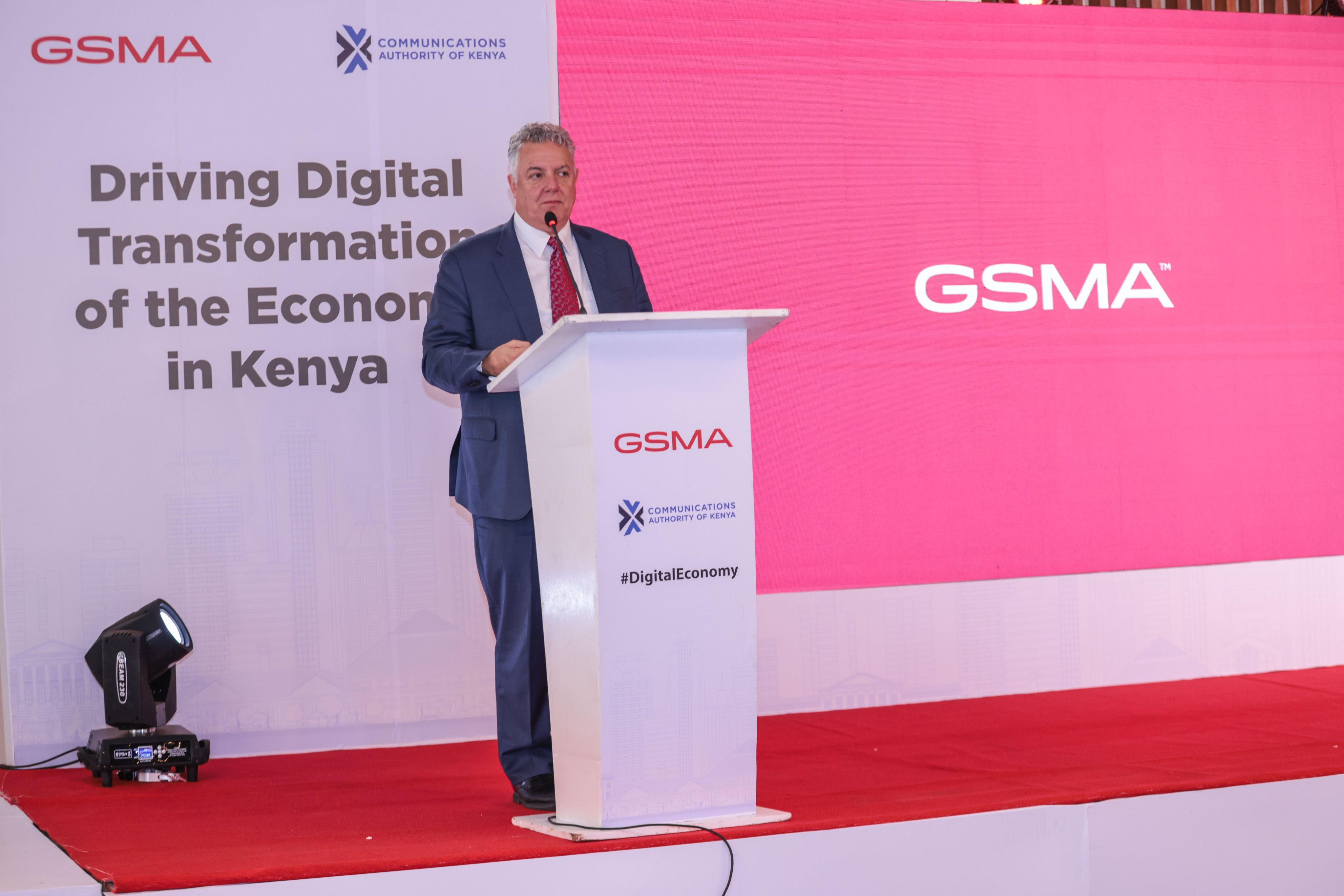Policy reforms needed to support Kenya’s rapid ICT growth, says CA boss
GLORY MUKHWANA -KNA
Mobile and digital connectivity is growing rapidly in Kenya, with the latest data showing that mobile phone penetration exceeds 130 percent.
A report released by the Communications Authority of Kenya (CA), in collaboration with GSMA, revealed that as of the end of June 2024, Kenya had more than 68.9 million mobile subscribers, translating to a mobile penetration rate of 133.7 percent.
The Kenya Digital Economy Report provided insights for stakeholders on driving investments and policy reforms to further enhance the digital economy in the country.
In a speech delivered on his behalf by CA Director for Legal Services Lydia Sitienei, CA Director General David Mugonyi stated that Kenya is a nation that recognizes individuals with an eye for opportunity and that the promise of a digital economy is a perfect fit for young people, developers, and the future.
“The growth of the ICT industry and the rapid pace of innovation calls for a responsive policy and legal framework for our people to live, learn, work, and for businesses to thrive,” Mugonyi said.
He revealed that as at the end of June 2024, Kenya had more than 68.9 million mobile subscribers, translating to a mobile penetration rate of 133.7 per cent. At the same point Kenya had 39.8 million mobile money subscriptions, a penetration rate of 77.3 per cent.
In the same period, 66.1 million mobile devices were connected to mobile networks representing a penetration rate of 128.3 per cent with the comparative penetration rates for smartphones and feature phones being 68.3 and 59.9 per cent, respectively.
Mugonyi said these figures indicate a rising platform for innovation, creation of value through new products and services and the delivery of meaningful and tangible prosperity.
“Today there are 38.4 million mobile broadband subscriptions in Kenya compared to 1.5 million fixed data subscriptions.
To achieve our national digital aspirations, we, the public and private sectors, must act in harmony to address the dual challenges of device affordability and insufficiency of digital skills which continue to hold back the rapid development of our digital economy,” he added.
Mugonyi noted that the Communications Authority, in partnership with Safaricom and Huawei Kenya, carried out a digital skilling exercise in Marsabit County which demonstrated the enthusiasm, affinity, and appetite by Kenyans living in underserved and unserved areas for mobile network services.
“In the last five years, we have connected about 800,000 people across 24 counties to mobile network services through the Universal Service Fund (USF), opening new opportunities in communication, expanding knowledge and stimulating entrepreneurship,” he said.
He said ICTs are integral to public service delivery and the Communications Authority of Kenya is equally involved in several major strategic initiatives in support of the government’s digital transformation agenda.
“We are funding the deployment of 2,500 kilometers of fibre optic cable across 19 unserved and underserved counties at the cost of Sh5 billion as part of the Digital Superhighway, where 1,300 kilometers have already been laid,” Mugonyi said.
He highlighted that CA in partnership with Konza Technopolis Development Authority, is financing the roll-out of 47 centres of excellence across 47 counties and 1,450 ICT hubs across every ward in Kenya at the cost of Sh2.8 billion.
GSMA Head of Sub-Saharan Africa Angela Wamola said since the inception of Kenya’s mobile money in 2007, tremendous growth has been witnessed in the sector where today transactions worth Sh8 trillion are conducted on mobile money platforms annually.
She said this can help unlock economic potential of Kenya if taken advantage of. GSMA Chief Regulatory Officer John Giusti noted that to achieve Kenya’s Vision 2030 and the African Union’s Agenda 2063, mobile connectivity will play a key role since it is critical to all sectors of the society.

